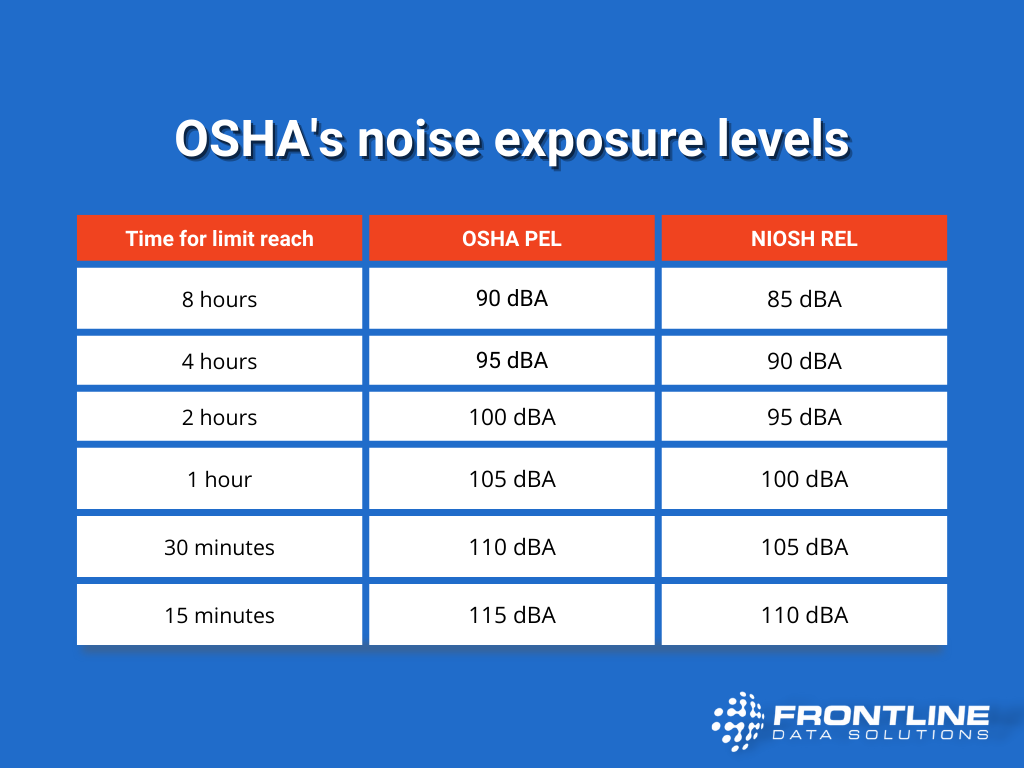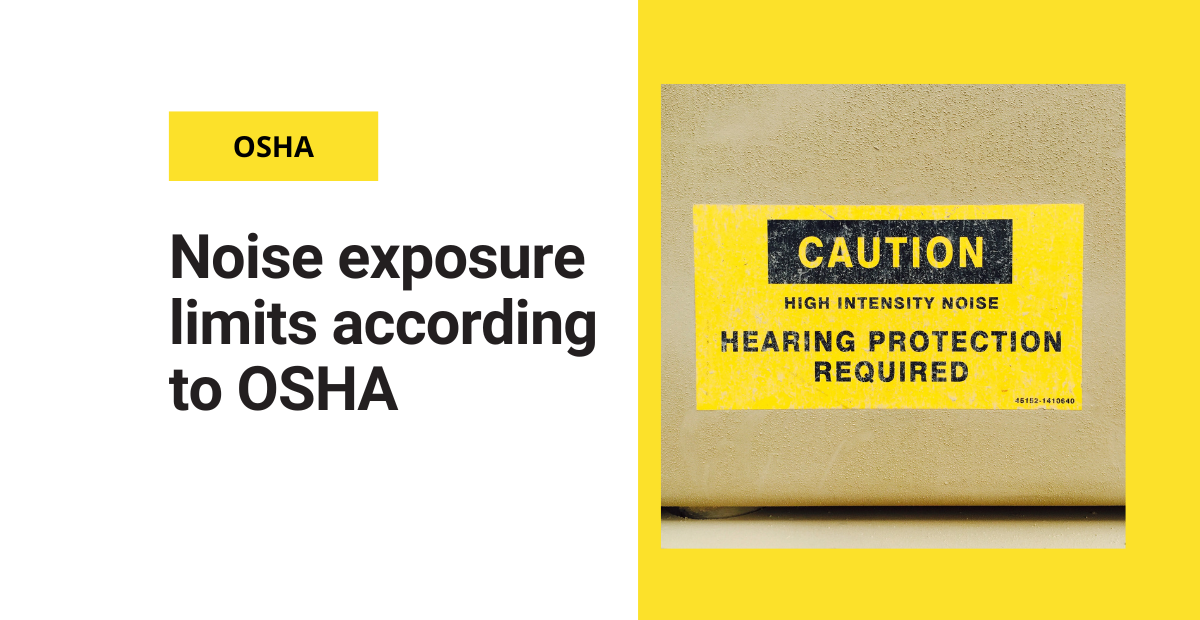Exceeding noise exposure limits in the workplace can lead to serious health effects. Examples include things like hearing impairment, hearing loss, or tinnitus. Still, noise exposure is one of the most preventable workplace injuries. That is why OSHA sets legal noise exposure limits for the workplace. These regulations protect workers from health risks that arise if exposed to noise for a certain amount of time.
OSHA refers to these noise exposure limits as “permissible exposure limits” (PELs). OSHA sets an “action level” that requires employers to begin providing necessary protections.
Let me know if you’d like alternative phrasings.
OSHA’s noise exposure limit
OSHA requires employers to provide hearing protection when employees are exposed to noise levels of 85 dBA or higher over an 8-hour shift. This “action level” triggers mandatory protective measures. This includes all employees, regardless of their age or physical condition.
Workers should not be exposed to noise levels exceeding 85 dB over eight hours. Permanent hearing damage can occur if there is prolonged exposure above this threshold.
The following table shows the OSHA PELs for employees exposed to noise (in decibels):

OSHA follows a rule that for every 5 dBA increase in noise level, cut allowed exposure time in half.
Noise exposure controls
When noise levels exceed this limit, employers must implement controls to reduce worker exposure. These controls may cover hearing protection and engineering measures. Examples of these measures include enclosing noisy processes or redesigning equipment to ensure lower decibels. Employers have to keep records of their noise control efforts and the measurements they take to determine the controls’ effectiveness.
If the employer doesn’t have a feasible way to reduce noise levels below the action level, they must institute hearing conservation programs. Those programs must include hearing protection devices (HPDs).
To stay on the safe side, you can rely on the NIOSH Sound Level Meter App. Hearing loss experts developed this to track and measure the noise levels in an environment. For more information, make sure to look at OSHA’s regulations on noise exposure limits.



